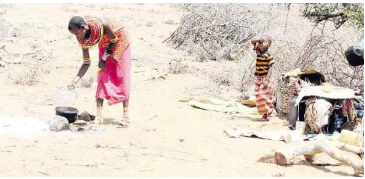

Acute food insecurity is set to increase in magnitude and severity in 22 countries and territories.
Kenya is one of them.
A Hunger Hotspots report by the UN called for urgent humanitarian action to save lives and livelihoods and prevent starvation and death in hotspots where acute hunger is likely to worsen between this November and May next year.
This assessment is based on the outlook in Hunger Hotspots FAO WFP early warnings on acute food insecurity.
The report showed Kenya, Lesotho, Namibia and Niger have been added to the hunger hotspots category, while Burkina Faso, Ethiopia, Malawi, Somalia, Zambia and Zimbabwe remain designated as hunger hotspots.
“The Sudan, Palestine, South Sudan, Haiti and Mali remain at the highest concern level. These are countries/territories with famine or risk of famine, or with populations already in catastrophe phase as per the Integrated Food Security Phase Classification,” the outlook showed.
“Chad, Lebanon, Myanmar, Mozambique, Nigeria, the Syrian Arab Republic and Yemen are classified as hotspots of very high concern, where large numbers of people are facing or are projected to face critical levels of acute food insecurity.This situation is driven by escalating factors that threaten to deepen already life-threatening conditions.”
The report focuses on the most severe and deteriorating acute hunger situations, but it does not represent all countries/territories experiencing acute food insecurity.
The UN report indicated that conflict and armed violence continue to be the primary drivers of hunger by disrupting food systems, displacing populations and obstructing humanitarian access.
It further warned the spread of conflict, particularly in the Middle East, coupled with climate and economic stressors is pushing millions of people to the brink.
The report, ‘Hunger Hotspots– FAO-WFP early warnings on acute food insecurity’ was issued by the UN Food and Agriculture Organisation and the UN World Food Programme.


